For some background, these are your speakers, and some relevant specs…

 SENSITIVITY
SENSITIVITY
88 dB SPL (2.83 V/1m)

NOMINAL IMPEDANCE
4 ohm

SUGGESTED AMPLIFIER POWER OUTPUT
50W – 250W, without clipping
So for some commentary, these are some nice speakers. 88 dB is not bad. Using the glass half empty point of view, let’s say the manufacturer overstates the sensitivity just a bit, and what you actually have is a 86 or 87 dB rated sensitivity figure. Going by this, and to state the obvious, if you want to make these play dynamically, you’re going to need some juice. While your $5 large is not exactly chump change, it’ll get you mid-grade stuff of good quality. Yeah, you can go used and buy a Levinson 383 Integrated, but its internals and their useful service life is either expired, or somewhere near, even if it has low hours on it. Now, a Levinson 383 completely refurbished by say George Meyer AV, who is an authorized Levinson repair facility, would be the right way to go, most definitely. Here it is:
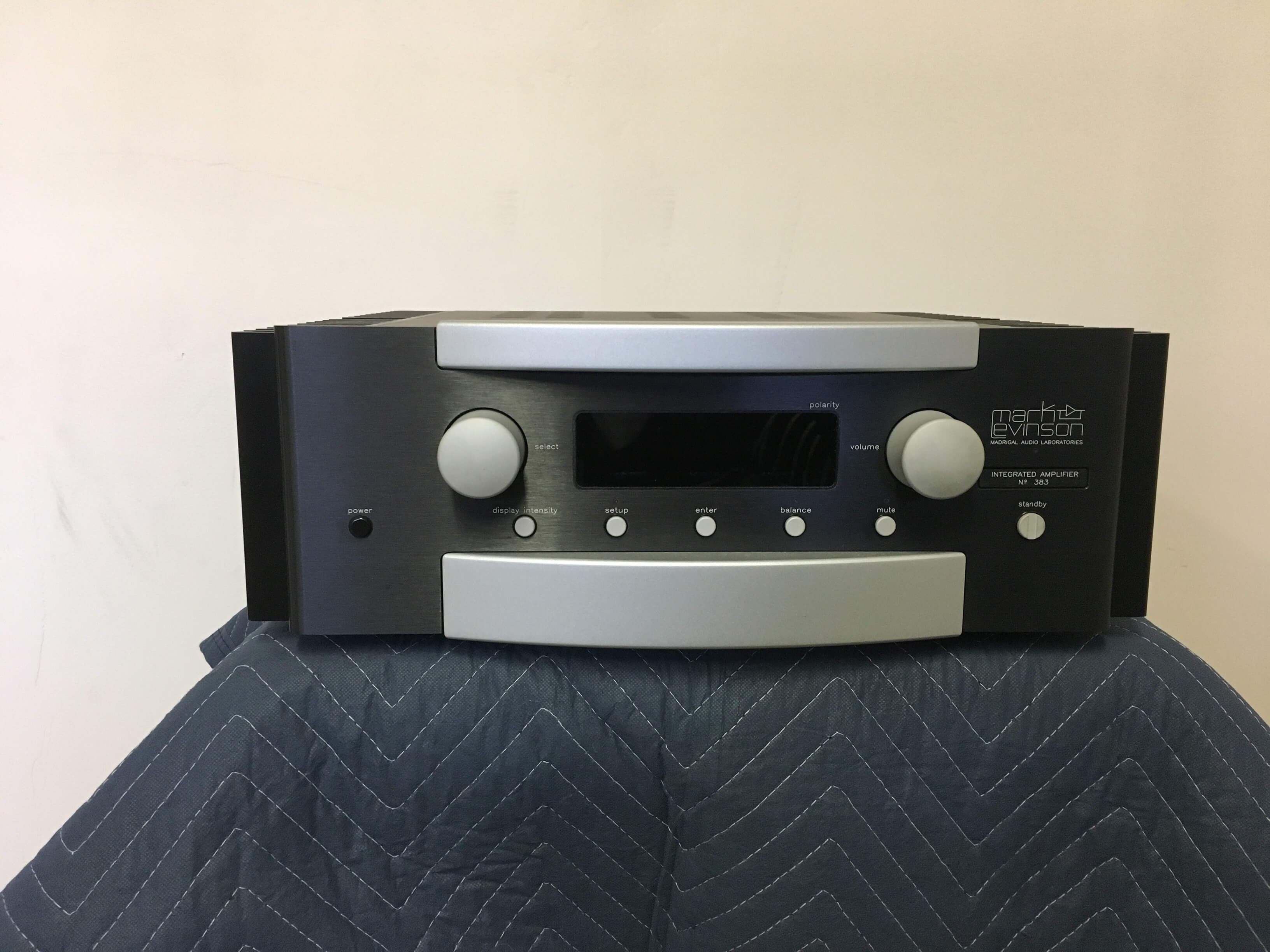

George Meyer AV wants $4 large for it, and it’s re-capped and refurbished.
Website:
Below are some specs for the Levinson 383…
Description: Solid-state integrated stereo amplifier.
Preamplifier section: Line-level inputs: two pairs balanced (XLR), three pairs single-ended (RCA, optional). Outputs: one pair record outputs (RCA), one IEC AC mains receptacle, one ground terminal. Controller connections: three 3.5mm mini-jacks (IR input, DC trigger out/in), one Mark Levinson Link communications connector, one 6-pin RJ-11 RS-232 port, two 8-pin RJ-45 control ports (PHASTLink-compatible). Voltage gain: 0, 6, 12, or 18dB in line stage (26.9dB in amplifier stage). Volume control range: 72.2dB. Gain resolution: 0.1dB steps above 38.5 in display (-34.7dB). Input overload: 4V on XLR, 2V on RCA (gain set to +12dB); 16V on XLR, 8V on RCA (gain set to 0dB). Frequency response: 10Hz-40kHz, ±1.0dB. Input impedance: 100k ohms. THD+noise: ±0.3%. Mains voltage: 100V, 120V, 220V, 230V, or 240VAC at 50 or 60Hz (factory set). Power consumption: typically 100W at standby, 200W at idle, 1200W at 4 ohms at rated output.
Amplifier section: Rated output power: 20Hz-20kHz, less than 0.3% THD (FTC): 100Wpc into 8 ohms (20dBW), 200W minimum continuous into 4 ohms (20dBW). Frequency response: 20Hz-20kHz, ±0.1dB. Output impedance: ±0.05 ohms, 20Hz-20kHz. Damping factor: greater than 800, 20Hz-20kHz into 8 ohms. Speaker connections: one pair Madrigal-designed speaker binding posts.
200 wpc of Levinson power will drive those SF speakers nicely. Not everyone likes the idea of used gear. If that is you OP, then new is the way to go. When it comes to mid fi and bang for the buck, I like Schiit Audio. Here is something for you to chew on…
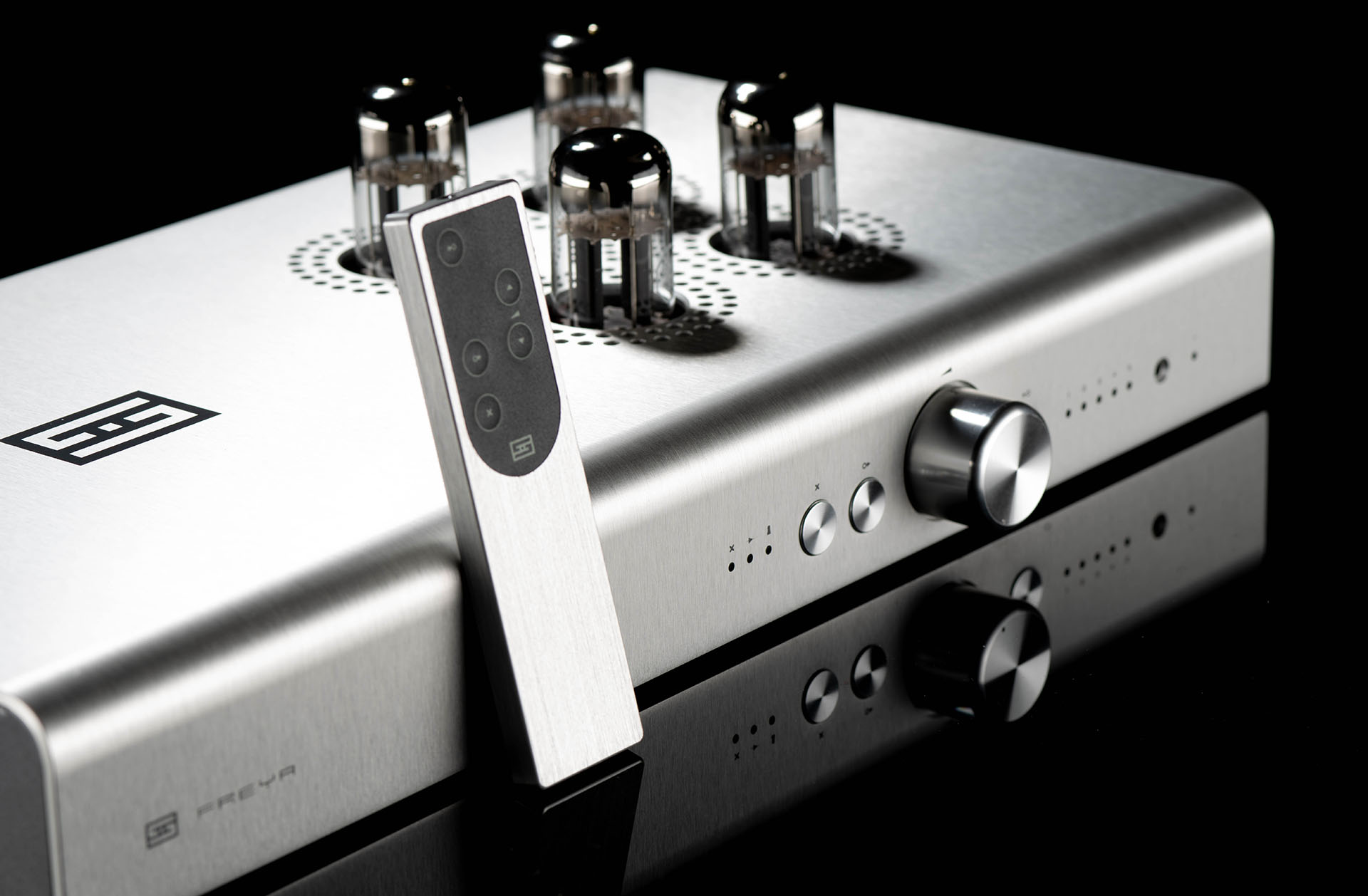
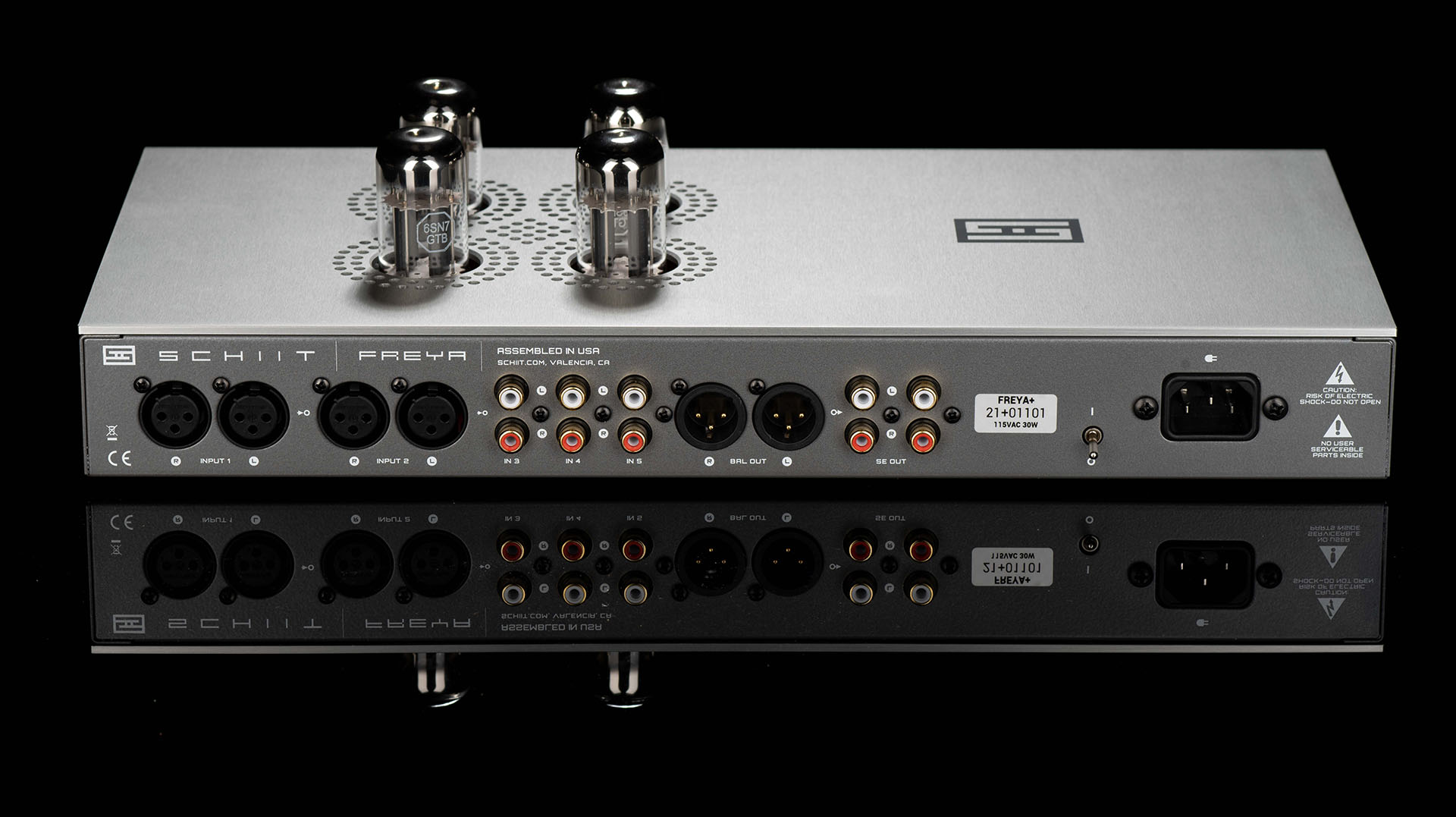
The above is the Freda+. It comes in at just below $1 large. Specs…
Compound Differential Buffer
Gain: 1 (0dB)
Frequency Response: 20Hz-20Khz, -0.2db, 3Hz-500KHz, -3dB
THD: <0.004%, 20Hz-20KHz, at 1V RMS
IMD: <0.0055%, CCIR
SNR: >120db, A-weighted, referenced to 2V RMS
Output Impedance: 75 ohms SE, 600 ohms balanced
Topology: JFET differential amplifier compound pair with equalized-gm followers
Tube Gain
Gain: 4 (12dB)
Frequency Response: 20Hz-20Khz, -0.2db, 3Hz-200KHz, -3dB
THD: <0.01%, 20Hz-20KHz, at 1V RMS
IMD: <0.01%, CCIR
SNR: >115db, A-weighted, referenced to 2V RMS
Output Impedance: 75 ohms SE, 600 ohms balanced
Topology: differential triode input with semi-circlotron follower stage
Now for some amps…
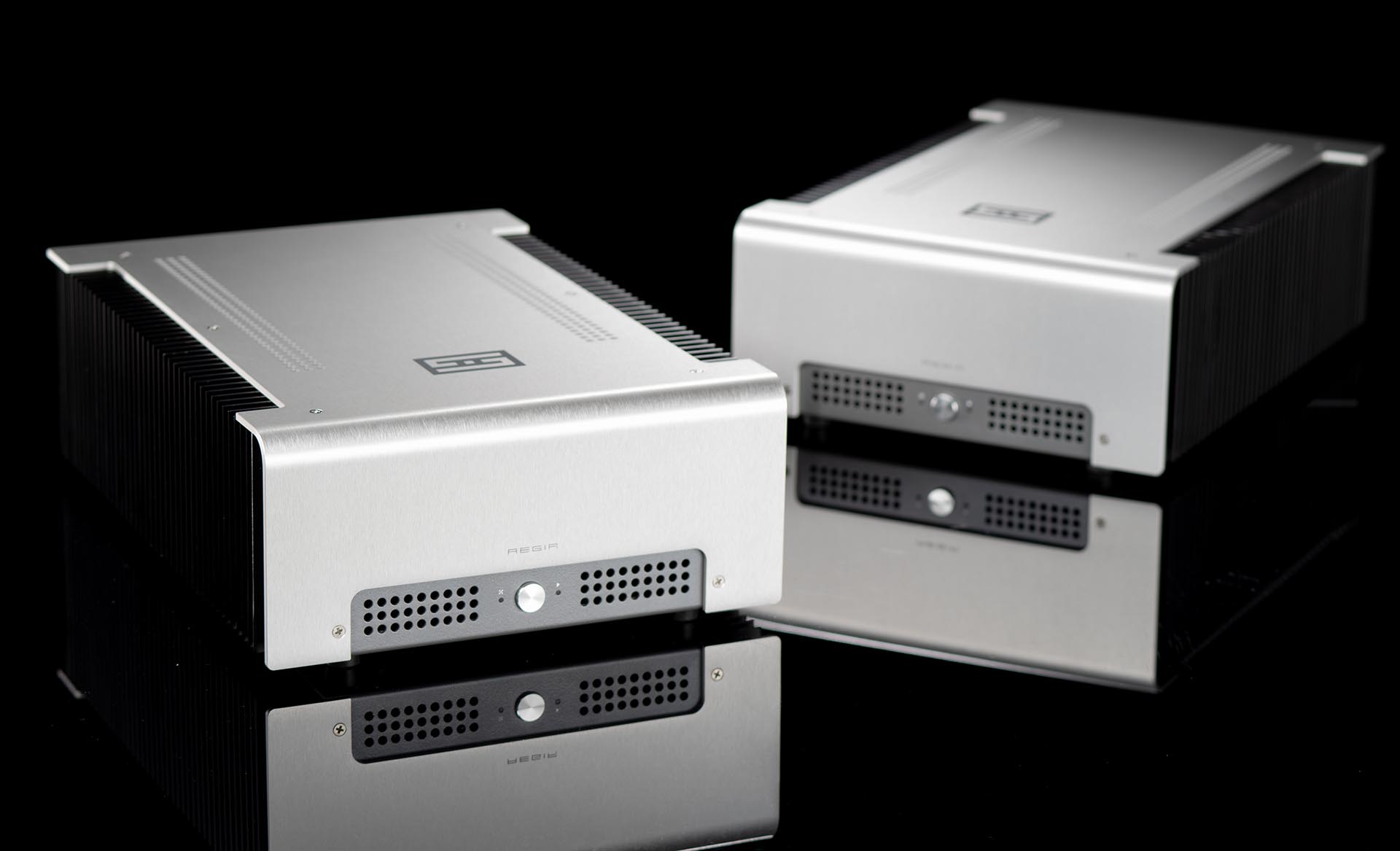
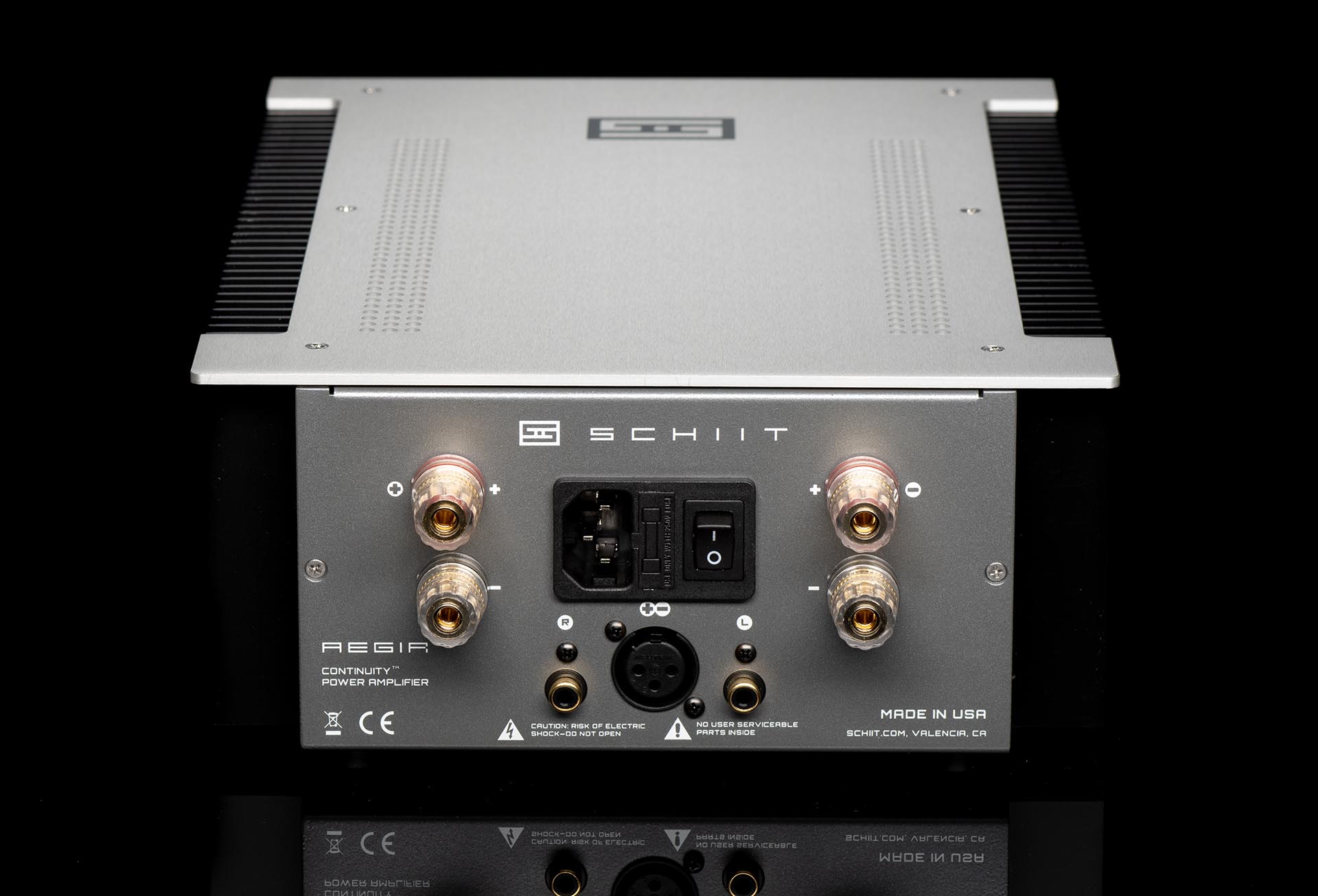
Get two of these Class A amps… $800 each or $1,600 total.
What if we made a Class A version of the Vidar? No, wait, strike that. What if we made a better-than-Class-A-in-many-respects version of the Vidar? Well, here you go. Meet Aegir.
Continuity™: Benefits Beyond Class A
Aegir is our first Continuity speaker amplifier, extending a technology we introduced with the Lyr 3 headphone amp. Technically, Continuity is a way to eliminate transconductance droop outside of the Class A bias region, and extend the benefits of Class A biasing. It also solves the NPN and PNP device mismatch problem, since it uses both NPN and PNP devices on both rails. It’s still a very hot-running amp, though, with over 10W of Class A standing bias.
Power Output:
Stereo, 8 Ohms: 20W RMS per channel
Stereo, 4 Ohms: 40W RMS per channel
Mono, 8 ohms: 80W RMS
Frequency Response: 20Hz-20Khz, -0.1db, 3Hz-500KHz, -3dB
THD: <0.01%, 20Hz-20KHz, at 20W RMS into 8 ohms
IMD: <0.01%, CCIR, at 20W RMS into 8 ohms
The Schiit gear, you’re in for $3 large, and you got money for nice interconnects and speaker wire. At 80 wpc for each speaker, AND Class A sound, that should do the job nicely. The tube input stage of the Freya + and the Class A amps should get you a very nice lit from within sound, and that midrange bloom most people like. Anyways, that’s my 2 cents. Hope it helps…. Have a nice new year.